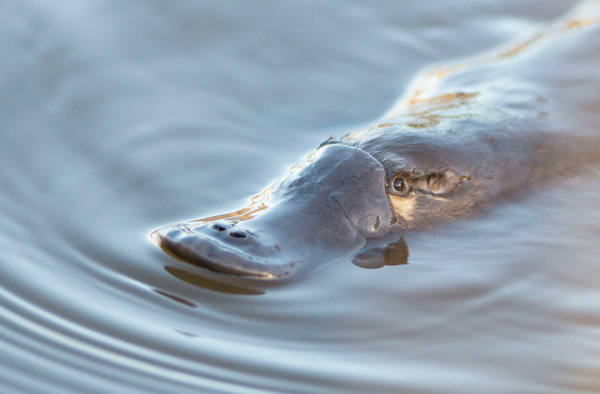By Geoff Williams, Australian Platypus Conservancy
Do you want to monitor local platypus numbers as part of a new citizen science project that seeks to conserve this very special mammal?
The Australian Platypus Conservancy (APC) has developed standardised visual monitoring techniques during the past decade that very effectively track how platypus populations vary through time.
The basic method involves trained volunteers visiting fixed monitoring sites at frequent intervals to record the number of platypus observed. Crucially, they keep track of both when animals are seen and when they are not.
This allows the frequency of sightings – the average number of animals seen per site-visit – to be calculated as an index of platypus activity which, in turn, can be used to plot population trends.
The APC has recently expanded existing efforts by launching the Australian Platypus Monitoring Network (APMN).
A dedicated website and app provide training for volunteers and allow immediate uploading of sightings records in the field.
Participants can also obtain personalised feedback about their own results.
It doesn’t take a huge time commitment – you don’t have to watch for platypus every day; once or twice a week is fine on average, though you can certainly look more often if you want.
A standard monitoring session requires just five or 10 minutes of observation time at each site, and many APMN participants fit their platypus scanning sessions into other day-to-day activities, such as taking regular walks for exercise, biking to and from work, or checking a stock pump.
Volunteers can choose to work at a number of existing sites along the Murray River at Albury and Mungabareena Reserve or they can establish new sites convenient to them.
Participants who can to monitor on their private land are particularly welcome and they are able specify that their site is restricted and not open to use by other observers.
Despite being one of Australia’s most iconic animals little is known about how the platypus is faring in the wild.
Its conservation status was listed as ‘Near Threatened’ in the recent CSIRO Action Plan for Australian Mammals but detailed information about platypus population trends is lacking for most river systems, including the Murray. APMN will provide vital information that can be used to plan long-term conservation action.
For details visit www.platypusnetwork.org.au.

